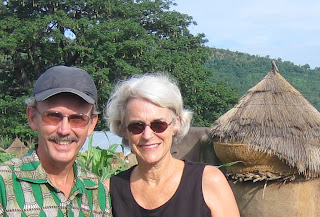For our African American family and friends reading this, we can’t imagine the emotions that you, in particular, might have felt in visiting this site. Perhaps one of your ancestors (perhaps one of MLK’s ancestors) went through the narrow “Door of No Return” (see photo) before being packed into the cargo hold of the waiting ship. It certainly made an impression on us to stand in a dungeon where captured Africans were “packed and stored”. The reality of the brutality, seeing the shackles, the dark, overcrowded and unsanitary conditions in which they were kept for weeks or months at a time was overwhelming, leaving us with a sick feeling. We saw evidence and heard horrific stories of the treatment they received.
As we often find, one must “follow the money” to understand history. From your high school US history lessons, you might remember that the slave trade was a triangle and all 3 corners, driven by profit, were equally responsible for its “success”…….(1) Europeans who sailed the ships, transported the slaves and purchased the North American products like cotton and tobacco. (2) Africans, who captured other Africans in tribal wars or outright kidnappings to sell to the European ships, and (3) Americans who purchased the slaves and exploited them for economic gain. Although the African slaves were the ones who suffered, all 3 corners of the triangle contributed to our tragic history.
When you view the photo of the Door of No Return, you will see how small it appears. It is indeed small…just large enough for those emaciated prisoners who survived the waiting period in the fort to squeeze through one at a time. It is estimated that tens of millions of Africans were captured over hundreds of years, but perhaps only 20% survived the ordeal to actually make it to the US. An interesting note about this door is that recently an African American family who was able to trace their history back to this spot had a ceremonial “reverse entry” into the fort. We hope the symbolism of their re-entry can be part of the healing journey towards Martin Luther King’s dream of justice and equality for all.




No comments:
Post a Comment